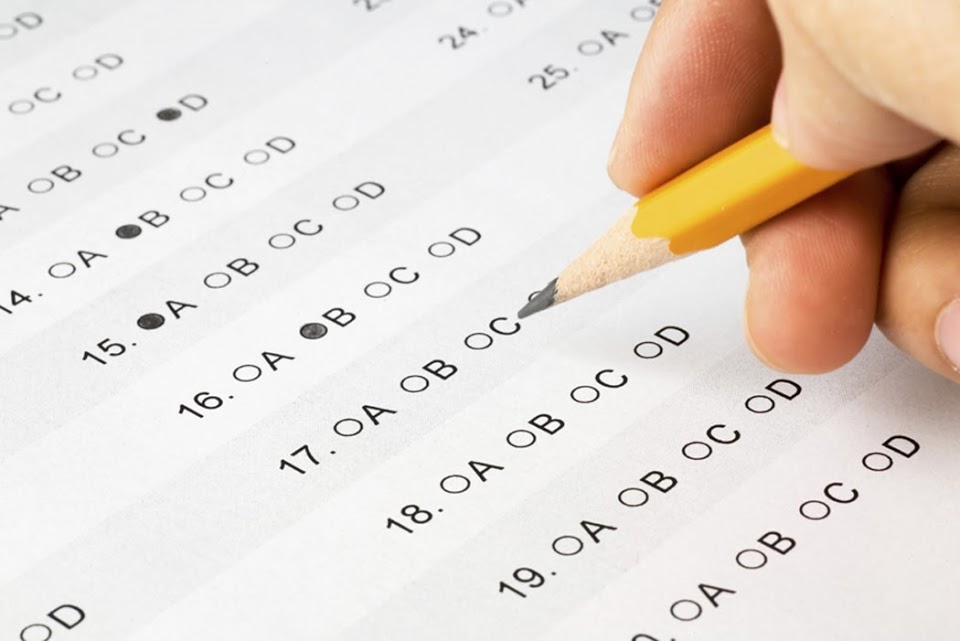
Credit: Pexels
It was the height of distance learning when 16-year-old Aaron Butler took Compton Unified’s first step into data science education by joining the Young Data Scientists League. The next year, 2021, the young African American varsity basketball captain enrolled in Compton’s first high school data science course, thanks to a 2020 decision by UC’s admissions committee allowing such courses to qualify for students’ third or fourth year of high school math. Now a business economics major at UCLA, Aaron said that “before I was closed off to math, but data science made me way more interested in mathematics.”
Because of UC’s decision to count data science toward the math requirement for college admissions, Compton’s Dominguez High counselors recommended that students like Aaron enroll in data science without fear of them losing their competitive edge on university admissions. Ensuring college access is paramount for our student population, who are predominantly Hispanic, Black and Pacific-Islander and 94% of whom are socio-economically disadvantaged. Data science, with its hands-on, real-world applications, is exactly the right gateway for both math-averse and math-inclined students alike to engage with rich mathematics and take the UC-recommended four years of math coursework.
Now UC has retracted that decision, making it much less likely that counselors will recommend data science to our students. Consequently, we’re likely to see a decline in enrollment and retention during the four years of high school mathematics among students of color.
Data Science at Dominguez High School is the only course in Compton Unified that allows students to receive regular in-classroom instruction in relevant topics such as predictive mathematical modeling, machine learning, artificial intelligence (AI), sensitivity analysis, and programming, which all rely on math concepts taught and reinforced in the data science classroom. This is in addition to a number of other high-level concepts in quantitative reasoning and analysis, such as linear algebra, 3D vector space, conditional probability and more.
As the teacher of Compton’s Data Science course, in partnership with Stanford’s Youcubed, I (Jason) end up teaching content from a range of advanced math standards because, though my students are passing courses like Integrated Math 3, Precalculus and even Calculus, they are not fully grasping the material there. Students report having the opportunity to finally make sense of their traditional math courses by applying concepts as a part of the data science experience. Once they learn to think about math in context, they possess a skill that enables them to learn subsequent math content better.
Another PERSPECTIVE ON THIS TOPIC
This is a defining moment for mathematics education in California. Neural network models, the driving force behind AI tools such as ChatGPT, are one of the hottest subjects in applied mathematics research. By adopting data science in 2020, UC took a proactive step toward reframing mathematics as a relevant discipline that could equip 21st century learners with scientifically valid tools to engage in the rapidly changing information landscape. At the same time, UC recognized alternate pathways to quantitative reasoning courses in college without precluding students from science, tech, engineering and math (STEM) majors. The reversal of that decision will push math back to a position of irrelevance in the eyes of most students, especially those traditionally marginalized in STEM.
Moreover, not allowing data science courses to count for admission doesn’t only sacrifice a hook for attracting students to STEM fields. It also denies students who are not interested in STEM the opportunity to code, exacerbating the digital divide and, consequently, the wealth gap. As UC’s Office of the President wrote after the Berkeley campus created a college of computing, data science and society, “Every undergraduate in any area of study will increasingly need exposure to data science during their time on campus.”
Why should students wait until college to delve into these rich waters of mathematical study?
Narrowing the scope of acceptable mathematics perpetuates exclusivity rather than fostering inclusivity and belief in all learners’ potential. For many Dominguez High students we’ve spoken with who are either enrolled or have graduated from the UC system, success and persistence in STEM, including data science, correlated to growth mindsets, cultural competence, positive identities and supportive communities and structures.
As technology evolves, so must we reevaluate definitions, policies and support systems that address gaps in math achievement, engagement and retention. This comprehensive reassessment requires input from diverse stakeholders, fostering collective understanding and alignment toward common goals. We must put in place a review process that engages school districts, education leaders, classroom educators, faculty from the California State University, and families who can offer crucial insights on the impact of key decisions affecting our most vulnerable populations. This process must be data-driven. It is argued that allowing data science to validate Algebra 2 adversely impacted preparation for STEM degrees for students of color. Where is the data supporting this assertion? On the contrary, we have decades of data that demonstrate that the traditional Algebra 2 pathway disproportionately fails to get students of color college-ready, and falls short of promises to boost post-secondary STEM engagement.
We have seen the power of data science to increase college readiness and STEM engagement for all, particularly underrepresented students of color. As Aaron told us, “Data science was very hands-on because we were applying the math we learned. It made me like the course even more.” Every student like Aaron should have exposure to data science that opens mathematics to them as a highly relevant 21st century discipline where they know they belong.
•••
Jason Lee Morgan, an 18-year math teacher at Dominguez High School in Compton, instructs the Stanford YouCubed’s data science course.
Kagba Suaray, Ph.D., is a professor of mathematics and statistics at California State University, Long Beach, and graduate adviser for the applied statistics master of science program.
Kyndall Brown, Ph.D., executive director of the California Math Project at UCLA and Robin Wilson, Ph.D., professor of mathematics at California State Polytechnic University, Pomona and Loyola Marymount University, contributed to this commentary.
The opinions in this commentary are those of the authors. If you would like to submit a commentary, please review our guidelines and contact us.


